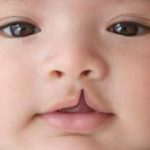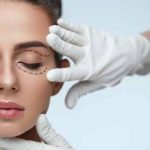What is ear surgery?
Ear surgery, also known as otoplasty, can improve the shape, position or proportion of the ear. A defect in the ear structure that is present at birth or that becomes apparent with development can be corrected by otoplasty. This procedure can also treat misshapen ears caused by injury.
Otoplasty creates a more natural shape while bringing balance and proportion to the ears and face. Correction of even minor deformities can have profound benefits to appearance and self-esteem. If protruding or disfigured ears bother you or your child, you may consider plastic surgery.
Why it’s done
You might consider otoplasty if:
- Your ear or ears stick out too far from your head
- Your ears are large in proportion to your head
- You’re dissatisfied with a previous ear surgery
Otoplasty is typically done on both ears to optimize symmetry.
Otoplasty won’t change the location of your ears or alter your ability to hear.
What’s the best age for otoplasty?
Anyone with fully developed ears can get otoplasty. That said, surgeons perform the majority of otoplasty procedures on children after age 4. Some adults choose otoplasty as well.
What are the different types of otoplasty?
There are different types of otoplasty, including:
- Ear pinning.
- Ear reduction.
- Ear augmentation.
Ear pinning
Surgeons recommend this type of otoplasty if you or your child have prominent ears that stick out. The goal of ear pinning is to bring your ears in closer to the sides of your head and reshape malformed cartilage.
Ear reduction
People with large or oversized ears (macrotia) may benefit from an ear reduction. During this procedure, a surgeon will remove tissue to make your ears smaller.
Ear augmentation
Sometimes, people have misshapen ears, small ears or ears that haven’t fully developed (microtia). The goal of ear augmentation is to increase the outer portion of your ear. This usually requires cartilage or tissue grafting.
What can ear surgery treat?
- Overly large ears – a condition called macrotia
- Protruding ears occurring on one or both sides in varying degrees – not associated with hearing loss
- Adult dissatisfaction with previous ear surgery
Who is a good candidate for ear surgery?
Children who are good candidates for ear surgery are:
- Healthy, without a life-threatening illness or untreated chronic ear infections
- Generally 5 years old, or when a child’s ear cartilage is stable enough for correction
- Cooperative and follow instructions well
- Able to communicate their feelings and do not voice objections when surgery is discussed
Teenagers and adults who are good candidates for ear surgery are:
- Healthy individuals who do not have a life-threatening illness or medical conditions that can impair healing
- Individuals with a positive outlook and specific goals in mind for ear surgery
- Nonsmokers
Ear surgery is a highly individualized procedure and you should do it for yourself, not to fulfill someone else’s desires or to try to fit any sort of ideal image.
 What happens during otoplasty?
What happens during otoplasty?
Otoplasty is usually an outpatient procedure. This means you’ll be able to go home the same day.
Before surgery begins, your healthcare provider will give you anesthesia to keep you comfortable. This is done under general anesthesia (where you’re completely asleep) or local anesthesia with sedation (where you’re sleepy, but can still respond to questions).
The specific surgical steps vary depending on what type of otoplasty you’re having. General steps include:
- Making an incision (usually on the back of your ear or in the folds of your ear).
- Adding or removing tissue to your ear.
- Reshaping your ear.
- Closing the incision with stitches.
Risks
Otoplasty, as with any other type of major surgery, has risks, including the risk of bleeding, infection and an adverse reaction to anesthesia.
Other risks associated with otoplasty include:
- Scarring. While scars are permanent, they’ll likely be hidden behind your ears or within the creases of your ears.
- Asymmetry in ear placement. This could occur as a result of changes during the healing process. Also, surgery might not successfully correct preexisting asymmetry.
- Changes in skin sensation. During otoplasty, the repositioning of your ears can temporarily affect skin sensation in the area. Rarely, changes are permanent.
- Allergic reaction. It’s possible to have an allergic reaction to the surgical tape or other materials used during or after the procedure.
- Problems with stitches. Stitches used to secure the ear’s new shape might work their way to the surface of the skin and need to be removed. This can cause inflammation of the affected skin. As a result, you might need additional surgery.
- Overcorrection. Otoplasty can create unnatural contours that make ears appear to be pinned back.
How you prepare
You’ll talk to a plastic surgeon about otoplasty. During your first visit, your plastic surgeon will likely:
- Review your medical history. Be prepared to answer questions about current and past medical conditions, especially any ear infections. Your doctor may also ask about any medications you’re taking or you’ve taken recently, as well as any surgeries you’ve had.
- Do a physical exam. To determine your treatment options, your doctor will examine your ears — including their placement, size, shape and symmetry. The doctor might also take pictures of your ears for your medical record.
- Discuss your expectations. Your doctor will likely ask why you want otoplasty and what results you’re expecting after the procedure. Make sure you understand the risks of otoplasty, such as possible overcorrection.
If you’re a good candidate for otoplasty, your doctor may recommend that you take some steps to prepare before your procedure.
Food and medications
You’ll likely need to avoid aspirin, anti-inflammatory drugs and herbal supplements, which can increase bleeding.
Other precautions
Smoking decreases blood flow in the skin and can slow the healing process. If you smoke, your doctor will recommend that you stop smoking before surgery and during recovery.
Also, you’ll need to make plans for someone to drive you home after surgery and stay with you for the first night of your recovery.
What you can expect
Before
Otoplasty can be done in a hospital or an outpatient surgical facility.
Sometimes the procedure is done with sedation and local anesthesia, which numbs only part of your body. In other cases, general anesthesia — which renders you unconscious — may be given before your procedure.
During
Otoplasty techniques vary based on what kind of correction is needed. The specific technique your plastic surgeon chooses will determine the location of the incisions and the resulting scars.
Your doctor might make incisions:
- On the backs of your ears
- Within the inner creases of your ears
After making incisions, your doctor might remove excess cartilage and skin. He or she will then fold the cartilage into the proper position and secure it with internal stitches. Additional stitches will be used to close the incisions.
The procedure typically takes about two hours.
After
After otoplasty, your ears will be covered in bandages for protection and support.
You’ll likely feel some discomfort and itching. Take pain medication as recommended by your doctor. If you take pain medication and your discomfort increases, contact your doctor immediately.
To keep pressure off your ears, avoid sleeping on your side. Also try not to rub or place excessive force on the incisions. Consider wearing button-down shirts or shirts with loosefitting collars.
A few days after otoplasty, your doctor will remove your bandages. Your ears will likely be swollen and red. You may need to wear a loose headband that covers your ears at night for a few weeks. This will help keep you from pulling your ears forward when rolling over in bed.
Talk to your doctor about when — or if — your stitches will be removed. Some stitches dissolve on their own. Others must be removed in the doctor’s office in the weeks after the procedure.
Ask your doctor when it’s OK to resume daily activities, such as bathing and physical activity.
Results
After your bandages are removed, you’ll notice an immediate change in the appearance of your ears. These changes are permanent.
If you’re not satisfied with your results, check with your surgeon about the possibility of revision surgery.
Your detailed schedule after arrival in Iran
>> Day 1: Arrival at airport: you will be welcomed by our guide, then picked up and transferred to hotel*. Checking into hotel; Transfer from hotel to clinic; Visiting the doctor; Pre-op tests; Transfer from clinic to hotel
>> Day 2: Transfer from hotel to hospital; preparations for surgery; conversation between doctor & patient, reviewing the expectations; Performing of surgery; Post-op recovery at hospital; taking doctor’s instructions
>> Day 3: Taking doctor’s instruction; Transfer from hospital to hotel; Rest in hotel; taking post-op medications; following instructed diet; follow-up through doctor’s assistant.
>> Day 4: RRest in hotel; regular eating restarts; daily walking; taking post-up medications
>> Day 5: Rest in hotel; Regular eating restarts; Daily walking; follow-up through doctor’s assistant
>> Day 6: Taking shower at hotel; transfer from hotel to clinic; check-up and bandage removal (by the doctor)**; reviewing post-op instructions and dos & don’ts; receiving written certificate from doctor confirming patient is fit to fly; transfer from clinic to hotel.
>> Day 7: Transfer from hotel to SinoheMedTour’s office; SinoheMedTour gives patient special gift***; start of permanent follow-up through communication channels.
>> Note:
* Transfer from the airport to the hotel will be with the taxi.
** The doctor visit may be in the 7th or 8th day depending on the circumstances.
*** In some cases where your departure is in the weekends this step may not be feasible.




























